"Fish First" guides BBNC resource policy
Bristol Bay Native Corp. prioritizes salmon when making land development decisions across its Southwest Alaska region North of 60 Mining News – July 1, 2019
Last updated 9/25/2020 at 5:07pm
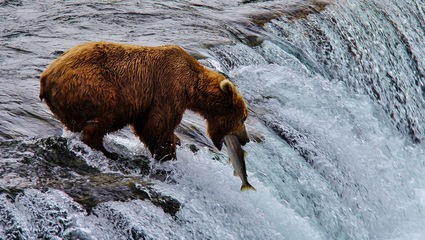
Bristol Bay Native Corporation
The roughly 10,000 brown bears residing in the Bristol Bay region outnumber the people living across this 40-million-acre swath of Southwest Alaska.
The Bristol Bay region is home to two resources that beyond a doubt earn the moniker "world-class" – an annual run of sockeye salmon that is second to none and Pebble, the largest undeveloped copper and gold deposits known to exist on Earth.
These world-renowned resources, however, have stirred up controversy in this Oklahoma-sized region of Southwest Alaska, as many of the roughly 7,400 Bristol Bay residents are concerned that mining the copper, gold, molybdenum and other metals stored at Pebble could put the salmon fishery at risk.
For many years, Bristol Bay Native Corp. (BBNC), the Alaska Native Claims Settlement Act (ANCSA) regional corporation for this resource-rich area of Southwest Alaska, took a neutral stand on Pebble, which is on state lands within the region. In 2009, however, BBNC came out in opposition to the proposed mine, citing "unquantifiable risks to the fishery and subsistence resources in the region" as the basis for this stance.
"BBNC's firm opposition to Pebble is consistent with the values of cultural and economic sustainability to which we hold ourselves," said BBNC Chairman Joe Chythlook.
While the ANCSA regional corporation has a "fish first" priority in Bristol Bay, it does not have an outright opposition to mining or other responsible resource development across the 62,500-square-mile region.
"BBNC does not otherwise oppose mining development. Pebble Mine is simply different," said BBNC President and CEO Jason Metrokin.
Diverse landscape, people
From a sweeping coastline to volcanic mountain ranges, the Bristol Bay region offers a widely diverse landscape that includes tundra covered expanses, boreal forests and the 77-mile-long Iliamna Lake.
This varied and resource-rich landscape drew Yup'ik, Aleut-Alutiiq and Dena'ina Athabaskan people to the Bristol Bay region more than 10,000 years ago.
While these three groups brought with them distinct languages and customs, over the centuries they overcame any differences to build a thriving network of traders.
Today, the descendants of these discrete yet cooperative first settlers of Bristol Bay make up the more than 10,000 shareholders of BBNC.
The same resources that formed the basis of the subsistence and trade economies of these first people of "a place that's always been" drew Russian and western settlers to Bristol Bay in the 18th and 19th centuries.
Danish cartographer Vitus Bering was the first western explorer to sail across Bristol Bay during an expedition for Russia in 1741.
It was famed British Explorer Captain James Cook, however, who named Bristol Bay while navigating the southern coast of Alaska during his final voyage in 1778.
Over the ensuing two centuries, Russia claimed Alaska, sold it to the United States, Alaska became a state and ANCSA was passed.
Under ANCSA, village corporations in the Bristol Bay region received title to 3 million acres of surface estate and BBNC, the regional corporation, received subsurface rights to the same lands.
BBNC also received full title, surface and subsurface rights, to an additional 116,000 acres in the Bristol Bay region.
These land selections were prioritized around subsistence and traditional uses, as well as the potential for natural resources.
The natural resource lands selected by BBNC and ANCSA village corporations in the Bristol Bay region included mineral properties prospective for gold, silver, copper, zinc, molybdenum, tungsten and coal.
Kawisgag copper-gold potential
Some of BBNC's most promising mineral lands are found on the Alaska Peninsula, a tectonically active and geologically young area on the Pacific Ring of Fire.
Alaska Peninsula and the Aleutian Islands, which extends roughly 1,200 miles to the southwest, are being formed as the Pacific Ocean plate dives under the North American plate. This dynamic geology is especially prospective for epithermal gold and intrusive-related deposits such as copper- and gold-rich skarns and porphyry mineralizing systems.
BBNC's Alaska Peninsula properties were last explored by Millrock Resources Inc., which cut a deal with the Southwest Alaska corporation in 2012 to investigate the mineral potential across a roughly 500,000-acre land package that covers a more than 75-mile stretch of the peninsula known to host copper, gold and other metals.
Kawisgag, situated toward the southern end of this land package, is a porphyry copper-gold-molybdenum prospect located about four miles east of the village of Ivanof Bay and within two miles of tidewater.
Grab samples of porphyry-style mineralization at Kawisgag have returned as much as 6.2 grams per metric ton gold and 1 percent copper.
The strong mineralization at Kawisgag is recognizable on surface by a three-square-mile color anomaly created by the oxidization of the sulfides there.
Exploration by Resource Associates of Alaska from 1979 to 1982 targeted gold in a quartz-arsenopyrite vein system in the northeast corner of the prospect that is traceable for more than 730 meters. In addition to gold, rock samples collected by Resource Associates contained promising quantities of copper, molybdenum and silver.
Cominco Ltd., drawn to the copper-gold porphyry potential, further explored Kawisgag with mapping and sampling in 1989 and 1990. Rock samples collected by Cominco returned as much as 6.2 g/t gold, 8.1 g/t silver, 0.28 percent copper and 0.1 percent molybdenum.
Additional early staged exploration – mapping, sampling and geophysics – carried out by Full Metal Minerals, Metallica Resources and Millrock have provided further evidence of buried high-grade copper-gold porphyry mineralization at Kawisgag.
BBNC's lands department said the metals potential turned up by this reconnaissance-level work warrants further exploration, including first-pass drilling, and the corporation is looking for a new partner for Kawisgag and its other properties on the Alaska Peninsula.
Bay View Inc., an ANCSA village corporation, owns the surface rights at Kawisgag and BBNC holds the mineral rights to this copper-gold prospective property.
Mineral-rich Chignik area
Another four BBNC Alaska Peninsula prospects that deserve further investigations are located near Chignik, a village about 50 miles northeast of Ivanof Bay.
Two of these – Mallard Duck and Warner Bay – are situated roughly 10 miles south of Chignik.
On lands owned wholly by BBNC, Mallard Duck hosts a large alteration zone that was first recognized by prospectors at the turn of the 20th Century.
More recent exploration at Mallard Duck, also referred to as Mallard Duck Bay or MDB, has included mapping and sampling by Bear Creek Mining and Resource Associates in the 1970s and 1980s; polarization and ground magnetic surveys completed by Full Metal and Metallica in 2008; and mapping, sampling, airborne geophysics and drilling by Millrock and First Quantum Minerals in 2014.
While this work has identified swarms of veins containing gold, silver, copper, molybdenum, zinc and lead within a 15-square-mile, an economic porphyry copper-gold deposit has yet to be identified at Mallard Duck.
Warner Bay, which is just south of Mallard Duck, is an even earlier staged porphyry prospect on lands owned by the village corporation Far West Inc. (surface) and BBNC (subsurface).
Mineralization, including chalcopyrite (copper), sphalerite (zinc) and molybdenite (molybdenum) occurs in massive sulfide veins as part of a northwest trending shear vein swarm at Warner Bay.
Sampling carried out in 2008 by Full Metal and Metallica returned up to 3.95 g/t gold, 89,100 g/t silver, 13.3 percent copper and 0.12 percent molybdenum.
Bee Creek, which has also been referred to as Dry Creek, is another porphyry prospect about 15 miles north of Chignik.
This prospective property was initially explored by Bear Creek Mining, which drilled five holes in 1976. One hole cut 160 meters averaging 0.25 percent copper, 0.011 percent molybdenum, including 20 meters of 0.35 percent copper and 0.018 percent molybdenum, according to a Bear Creek Mining report.
Similar results were encountered in two holes successfully completed by Metallica Resources and Full Metal Minerals in 2006, including a 118-meter intercept averaging 0.32 percent copper and 0.21 g/t gold.
In 2014 and 2015, Millrock and First Quantum further advanced exploration at Bee Creek.
Following up on the historical work, sampling and mapping by Millrock and First Quantum geologists outlined a core zone rich in copper, gold and molybdenum surrounded by a halo of anomalous zinc, lead and manganese. All told, the zoned mineralization covers roughly 3,000 acres.
"We found this beautifully zoned alteration system, and we found this beautifully zoned metallic anomaly in soil," Millrock Resources President Greg Beischer said at the time. "It is just an absolute classic porphyry signature."
Millrock and First Quantum narrowed targets for drilling with induced polarization geophysics. While this 2015 drill program encountered promising porphyry copper-gold mineralization, the results were not strong enough to encourage First Quantum to fund additional drilling on the Alaska Peninsula.
A deposit of high-volatile bituminous coal is also found on BBNC lands near Chignik.
Roughly 230 million metric tons of coal averaging 11,800 British thermal units (BTU) per pound have been identified in this formation, and the up to eight-foot-thick beds found there are hypothesized to contain as much as 1.5 billion metric tons of this thermal coal.
This near tidewater coal could provide a power source for mining any economic copper and gold deposits turned up in the region or could easily be shipped to Pacific Rim customers.
High-grade gold near Iliamna
In addition to the mineral prospective lands on the Alaska Peninsula, BBNC owns two properties south of Lake Iliamna – KUY and Fog Lake – that show the potential for high-grade gold.
Situated about eight miles south of the village of Kokhanok, KUY has shown the potential for high-grade gold and silver.
Resource Associates of Alaska discovered bonanza grade gold-silver telluride mineralization at KUY in 1980. Samples from two quartz veins within the Discovery zone – Discovery and Amethyst – contained as much as 56 oz/ton gold and 163 oz/ton silver.
Two areas of lower grade gold and silver – Swale zone and East Bench – were later discovered outside of the Discovery zone. Rock samples collected at Swale returned as much as 0.34 oz/ton gold and 0.73 oz/ton silver.
Homestake Mining Company evaluated KUY in 1997 but its week-long investigation did not duplicate Resource Associates bonanza grade findings.
Five holes targeting the Discovery vein in 1980 and another four drilled by Andover Mining in 2007 and 2008 did not encounter ore grade mineralization. The Discovery vein was determined to be highly discontinuous and is no longer considered a future drill target.
There currently is not enough information on KUY to allow for a definitive interpretation of the geological environment there. Evidence indicates that there could be a nearby porphyry deposit, something this part of the Bristol Bay region is known for.
Further interpretation of the data from geophysics carried out by Resource Associates and Andover could help narrow future drill targets on this property.
BBNC owns both surface and subsurface rights of the core area of KUY. Southern extensions of this prospect trends onto state lands.
Fog Lake hosts an epithermal gold target about 15 miles northeast of Kokhanok.
Most of the gold mineralization identified so far at Fog Lake occurs in 0.25- to 1-inch-wide subparallel massive sulfide veinlets. More than 40 veins were identified in an 1,800-foot section exposed in the Fog Creek gully, in concentrations of up to five to eight veins per foot.
More than 570 soil samples collected by Resource Associates in 1978 outlined a 700- by 300-meter gold anomaly near the Fog Creek gully. Seven of the soil samples from this area contained more than 1 g/t gold and the best sample returned 18.8 g/t gold. Samples from this area also returned up to 0.32 percent copper, along with anomalous zinc, lead and silver.
Two holes drilled at Fog Lake in 2008 returned anomalous copper and gold associated with quartz and pyrite veins. The highest-grade intercepts from the 305 meters of drilling include 2.15 meters of 1.48 g/t gold and 0.08 percent copper; and one meter of 2.85 g/t gold.
The mineralization in these holes, nor the narrow veins identified in Fog Creek, seem to explain the large gold anomaly identified on surface and BBNC geologists believe an epithermal gold system may be present under shallow overburden.
Additional geophysics would likely be the next step in narrowing drill targets at this prospect south of Lake Iliamna.
Alaska Peninsula Corp., a combination of five ANCSA village corporations in the Bristol Bay region, owns the surface lands at Fog Lake and BBNC owns the subsurface rights.
Developing socially, environmentally and fiscally sustainable mines at these and other mineral deposits could add jobs and other economic opportunities in the Bristol Bay region.
Path to Prosperity
Like many of Alaska's rural areas, the Bristol Bay economy is a mix of subsistence – gathering wild resources for food, shelter, clothing, crafts and other purposes – and cash.
"Households use money to purchase fuel, electricity and family goods – such as clothing and shelter. Residents also use cash to pay for equipment used for subsistence activities: guns and ammunition, fishing nets, boats, all-terrain vehicles and snowmachines," BBNC penned in a presentational guide of the Bristol Bay region.
The cash component of the economy comes primarily from jobs connected to the commercial fishing industry in the region, along with government and health care.
Many fishing jobs, however, are seasonal.
In addition to resource development, BBNC sees investing in small businesses within the region as a means of bolstering and diversifying the cash component of the Bristol Bay economy.
Toward this end, Bristol Bay Development Fund, created as a BBNC subsidiary in 2014, is investing $5 million into the Bristol Bay economy over an 11-year span.
This investment aims to provide multiple layers of benefits to shareholders living in the Bristol Bay region – expanding shareholder-owned businesses; providing new job opportunities; and improving the quality of life through the new goods and services provided by these new businesses.
"Small businesses are really the heartbeat of a community, and it's important for us to support that," said BBNC CEO Metrokin.
To spur these new ideas, BBNC and the development fund have launched "Path to Prosperity," a business development competition aimed at developing socially, environmentally and fiscally sustainable small businesses in the Bristol Bay region.
The top 10 to 12 finalists selected from an initial round of applicants will advance to a business start-up boot camp, which will provide these Bristol Bay entrepreneurs with the skills and resources needed to turn their ideas into business plans.
Boot camp participants will continue to develop a business plan and compete for a grant to use towards technical assistance or consulting services.
With today's globally connected community, who knows, maybe a third world-class resource could emerge from BBNC's Path to Prosperity.
EDITOR'S NOTE: "Fish First guides BBNC resource policy" is the sixth article in a 13-part series that investigates what the Alaska Native Claims Settlement Act means for Alaska's mining sector and its future. The remaining articles will dig deeper into each of the land-holding Regional corporations; the mining lands that they own; and the services they offer to the mining sector. As a life-long Alaskan that has written about mining here for more than a decade, it is my hope that this series will provide a better understanding of ANCSA and serve as a guide to mining companies seeking to do business in The Last Frontier. For further information on ANCSA see An Alaska Native claims primer for miners published in the February edition of North of 60 Mining News.










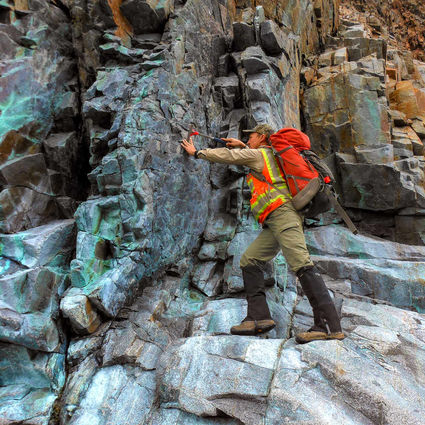

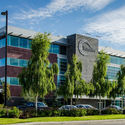
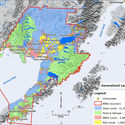


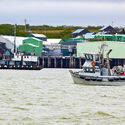
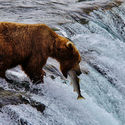
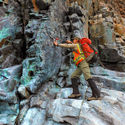
Reader Comments(0)